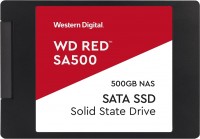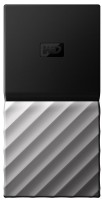SSD WD series Green (for mass consumption)
prices on 1 modelWD Green
Western Digital's "Green" series of SSDs ranks at the bottom of the brand's hierarchy. The target audience of WD Green is people who are looking for the most affordable and at the same time high-quality SSD to minimize cable clutter inside the PC, speed up system startup or upgrade the internal memory of a laptop without throwing an already installed hard drive into the trash. In the latter case, an additional plus will be the use of "cold" memory controllers that will not turn the laptop's insides into an oven.
 |
Most often, a typical WD Green is based on 64-layer TLC 3D NAND flash memory, equipped with a 4-channel controller from Silicon Motion and supports high-speed SLC caching. Also, many drives in this series boast improved hardware error correction algorithms, SMART monitoring, as well as support for TRIM and NCQ technologies. Some of them have a small RAM buffer, others do not. Usually you have to look for this information yourself, since WD does not publish it.
As for the model range, initially it was represented exclusively by 2.5 format drives. A little later, WD expanded the range with miniature M.2 drives, which are especially useful in the compressed space of a laptop or compact computer. Despite the format, the same SATA 3 bus is used to interact with the motherboard, and not a high-speed NVMe interface, so line speeds are limited to 545 MB / s, like earlier models of the 2.5 format.





